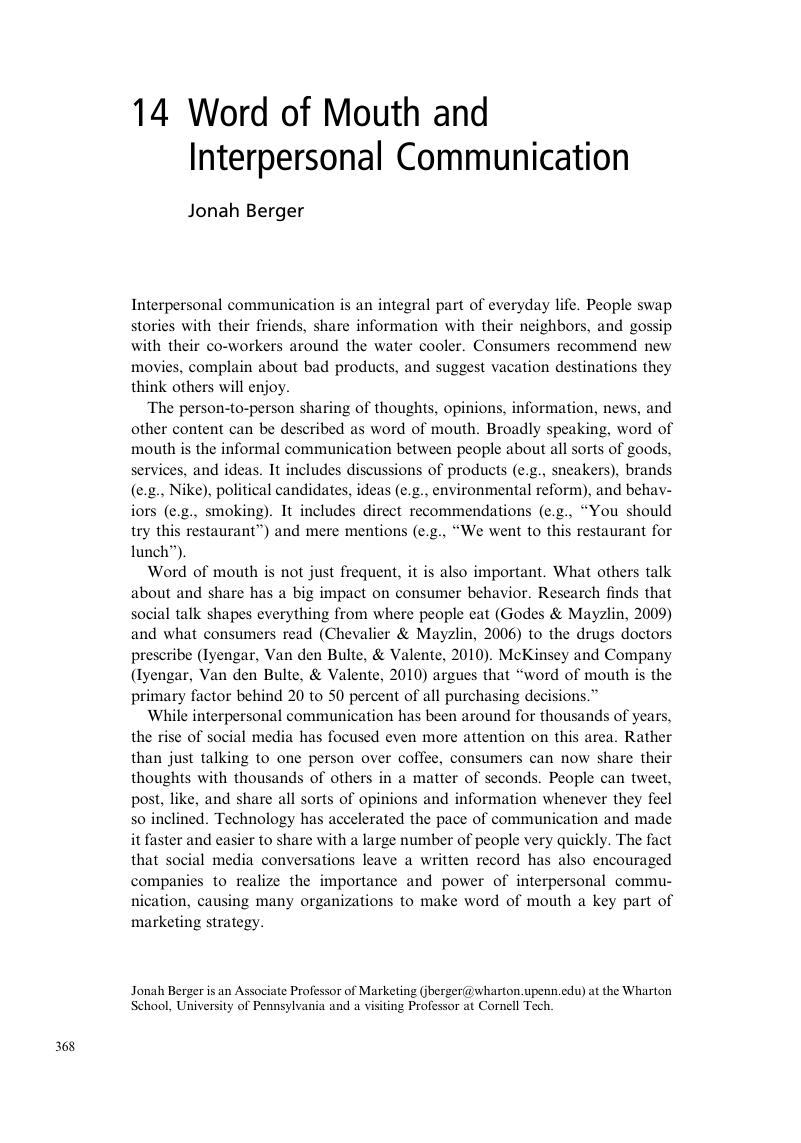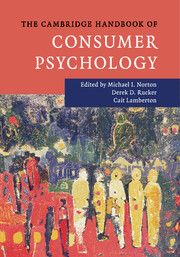Book contents
- The Cambridge Handbook of Consumer Psychology
- The Cambridge Handbook of Consumer Psychology
- Copyright page
- Contents
- Figures
- Tables
- Contributors
- Introduction
- Part I Individual Consumer Decision Making and Behavior
- Part II Interpersonal and Social Consumer Psychology
- 10 Identity-Signaling Behavior
- 11 Coping Research in the Broader Perspective
- 12 Power and Consumer Behavior
- 13 Social Hierarchy, Social Status, and Status Consumption
- 14 Word of Mouth and Interpersonal Communication
- 15 Gift Giving
- 16 Interpersonal Influences in Consumer Psychology
- 17 Agency and Communion as a Framework to Understand Consumer Behavior
- 18 Online Social Interaction
- Part III Societal Structures
- Name Index
- Subject Index
- References
14 - Word of Mouth and Interpersonal Communication
from Part II - Interpersonal and Social Consumer Psychology
Published online by Cambridge University Press: 05 October 2015
- The Cambridge Handbook of Consumer Psychology
- The Cambridge Handbook of Consumer Psychology
- Copyright page
- Contents
- Figures
- Tables
- Contributors
- Introduction
- Part I Individual Consumer Decision Making and Behavior
- Part II Interpersonal and Social Consumer Psychology
- 10 Identity-Signaling Behavior
- 11 Coping Research in the Broader Perspective
- 12 Power and Consumer Behavior
- 13 Social Hierarchy, Social Status, and Status Consumption
- 14 Word of Mouth and Interpersonal Communication
- 15 Gift Giving
- 16 Interpersonal Influences in Consumer Psychology
- 17 Agency and Communion as a Framework to Understand Consumer Behavior
- 18 Online Social Interaction
- Part III Societal Structures
- Name Index
- Subject Index
- References
Summary

- Type
- Chapter
- Information
- The Cambridge Handbook of Consumer Psychology , pp. 368 - 397Publisher: Cambridge University PressPrint publication year: 2015
References
- 5
- Cited by



